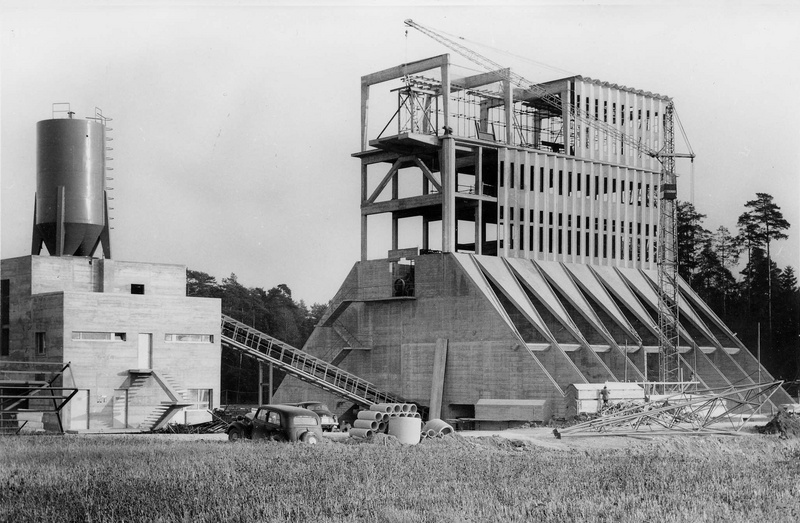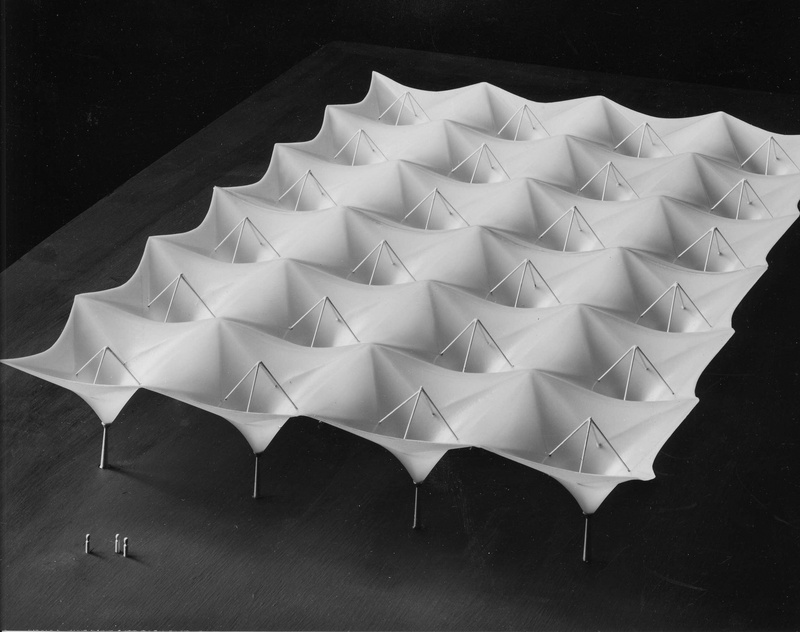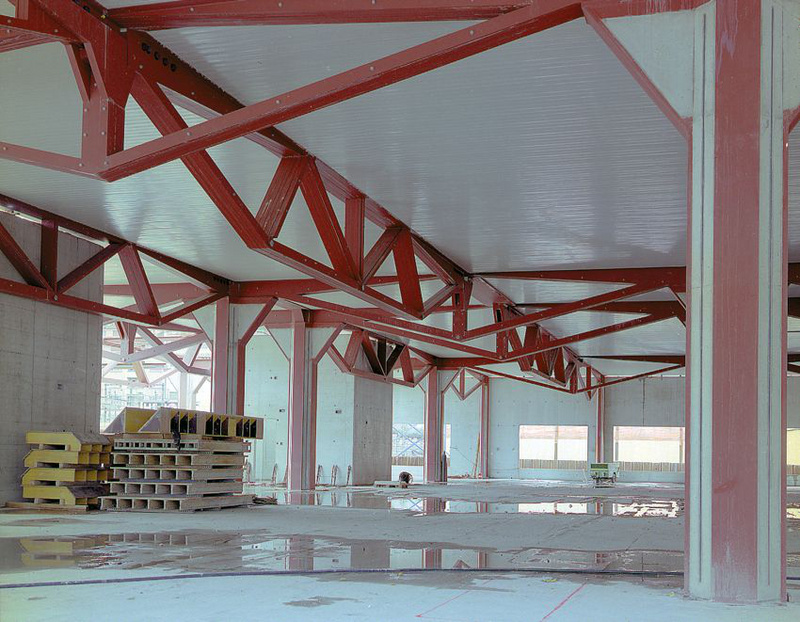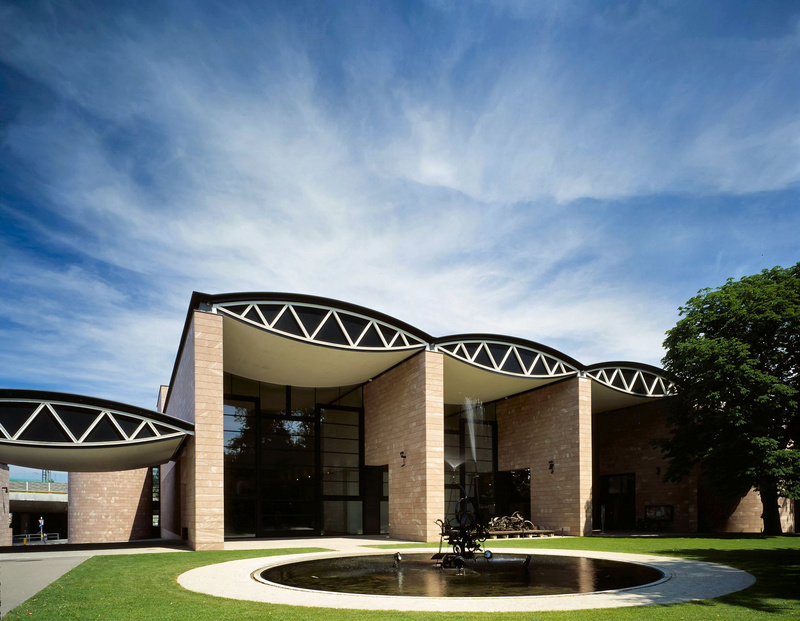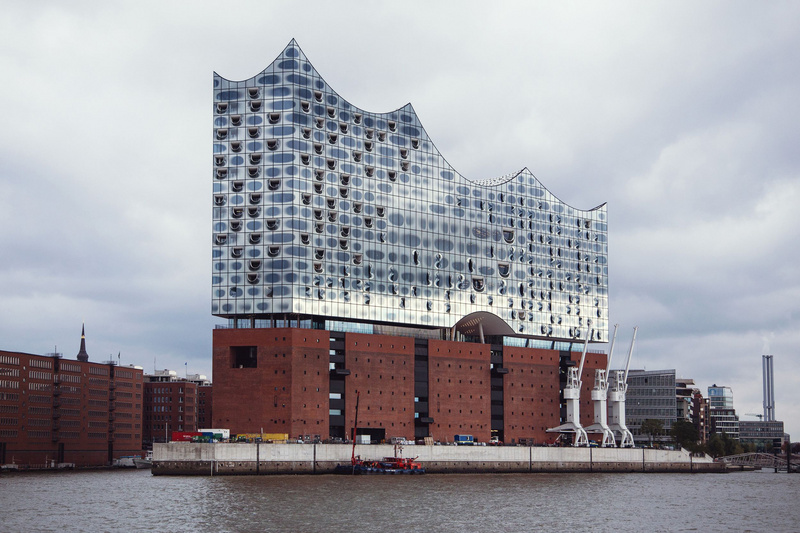HISTORY
Schnetzer Puskas Ingenieure originates from the engineering office founded by Heinz Hossdorf in 1953. Heinz Hossdorf had supplemented his office with a laboratory for model statics, where he worked with physicists and engineers to develop new measurement and testing techniques such as "hybrid statics", a symbiosis of experiment and computer analysis for the calculation of elastic load-bearing structures.
In the sixties and seventies, the office realized several important projects, including the central warehouse of VSK - now Coop - in Wangen bei Olten (1958-61), the gravel and concrete plant in Gunzgen (1960-62), the pavilion "Les échanges" for Expo '64 in Lausanne (1962-64), the Rudolf Steiner School in Basel (1962-67) or the city theater in Basel (1968-76).
In 1972, Heinz Hossdorf and Kilian Weiss founded the joint partnership Hossdorf and Weiss Ingenieure. From 1980, René Guillod and Rudolf Gisi become partners and the office operates under the name Weiss Guillod Gisi Ingenieure. Heinz Hossdorf withdraws as a co-owner at the same time. Heinrich Schnetzer becomes a partner in 1992 and the firm changes from a joint partnership to a company limited by shares with the name WGG Ingenieure in 1996. At the same time, Tivadar Puskas becomes a partner of the office. Important projects in the nineties are the Rankhof sports stadium (1994), the Tinguely Museum (1992-96) and the Peter Merian Haus (1992-1999), all in Basel.
The company name is changed to WGG Schnetzer Puskas Ingenieure AG in 2000. In 2004 and 2012 offices are opened in Zurich and Bern. With the founding of Schnetzer Puskas Ingenieure AG in 2009, WGG Schnetzer Puskas Ingenieure AG continues under the name Schnetzer Puskas International AG. The office is active nationally and internationally and works on a wide range of projects in structural engineering and bridge construction.


